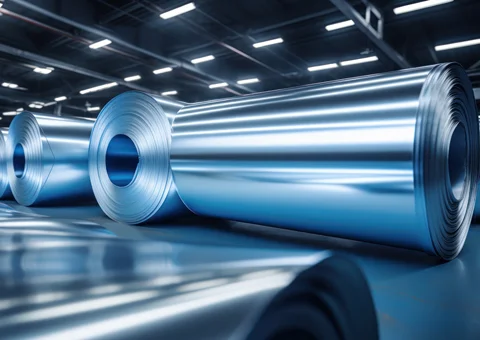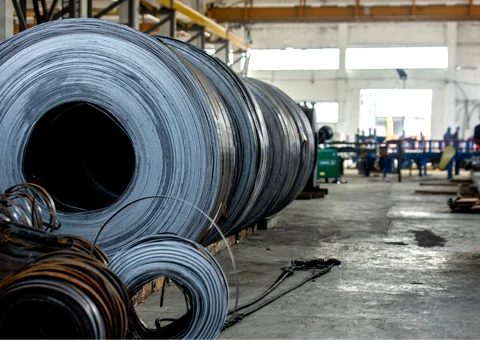In today's rapidly evolving industrial landscape, nothing rings louder than the call for sustainability. With environmental concerns mounting, industries are compelled to rethink their traditional ways. The steel industry—one of the backbones of modern infrastructure—stands at a pivotal crossroads: Will it make a transition from a linear to a circular economy, and if so, what does this portend for its future?
Steel fabrication has the potential to conform to the emerging principles of a circular economy—a shift that might redefine the industry's role in a sustainable future.
Understanding the Circular Economy
The circular economy is a visionary model that challenges the conventional “take, make, dispose” approach. It promotes a system in which resources are reused, repaired, and recycled to limit waste and environmental degradation. This model is not an abstract theory but a concrete methodology that industries around the world are now beginning to follow.
For the steel industry, this approach means reimagining each stage of the product life cycle, from design and production to consumption and recycling.
A core aspect of the circular economy is to design closed-loop systems that continuously cycle back resources for reuse in production, minimizing waste. This approach sharply contrasts with the linear approach, which often has resulted in resource depletion and environmental degradation. A shift toward such a circular model helps sectors reduce their ecological footprint, conserve natural resources, and make economic systems more sustainable.
Steel's Role in the Circular Economy
Steel's inherent recyclability makes it especially suitable for the circular economy. Unlike most materials, steel is infinitely recyclable without deterioration in properties. According to a 2018 blog published by the World Steel Association, more than 85% of all steel products are recycled at their end of life, further pinning its potential within the circular framework.
At the end of their useful life, steel products can be collected, melted down, and reformed into new ones without any loss of quality. This process not only saves energy but also reduces the need for raw material extraction, which can be environmentally damaging.
The steel industry already has developed systems and infrastructures supporting recycling practices, and this framework provides a good starting point for further integration of the circular economy. The aim here, therefore, is to optimize the recycling processes and increase intake from recycled steel in production to lessen the dependence on virgin material and reduce the overall environmental impact.
Shifting to a Circular Steel Industry
Moving toward a more circular steel industry depends on strategic frameworks combined with innovative practices. Some of the strategies put forward by the International Renewable Energy Agency include increased efficiency in recycling, better product design for achieving longevity, and close collaboration along supply chains. The strategies indicate that steel can lead the manufacturing industries toward sustainability.
Improving recycling processes involves investing in advanced technologies that raise the capacity and effectiveness of material recovery. This includes the development of better sorting and separation techniques to ensure high-quality, contaminant-free scrap. Product design for longevity also involves creating steel products that are easy to disassemble and recycle at the end of their life. Designers, manufacturers, and recyclers should work together in developing products with their entire life cycle in mind.
Equally key to the successful shift towards a circular economy is stimulating collaboration along the supply chain, which must include steel producers, consumers, and recyclers working together to establish closed-loop systems in which materials are continuously cycled back into production. Together, these stakeholders can capture opportunities for innovation, share good practices, and come up with new business models that support circular economy principles.
Challenges in Adopting Circular Practices
The future for circular economies in the steel industry is promising, but turning this vision into reality is not without its challenges. For one, technological limitations can hinder the development of efficient recycling processes. Current technologies for recycling are effective but energy-intensive, and contamination can lower the quality of the recycled steel.
Cost is another big obstacle. Transitioning into a circular economic model demands substantial upfront investment in the development of new technologies and infrastructures. For smaller-scale manufacturers, these costs are limiting and make it difficult to compete with larger firms that have greater resources to invest in innovation. Furthermore, the economic incentives for recycling and use of recycled materials are not always in line with market realities, and that can prevent these companies from going circular.
Regulatory frameworks also can be challenging. In most regions, current regulations hardly support or even encourage circular economy practices, causing uncertainty for businesses that want to invest in new technologies and processes. And finally, there often is resistance to change within the industry itself. Ingrained processes and thinking are hard to change, and stakeholders can be hesitant to adopt practices that will disrupt the status quo.
Innovations Paving the Way Forward
Despite these challenges, the steel industry is witnessing a wave of innovations targeted at surmounting them. Improvement in technologies used in recycling, such as enhanced sorting systems and more efficient smelting processes, will further improve materials recovery. These innovations are fundamental in improving quality and quantity, making steel production from scrap more feasible for manufacturers.
The development of renewable energy sources for steel production also is helping reduce the industry’s carbon footprint, while waste heat recovery systems are raising energy efficiency.
Companies are developing closed-loop production systems that incorporate recycling and minimize waste in the most resource-efficient way possible. For example, some manufacturers are looking into alternative materials and procedures that reduce the reliance on virgin resources. Others are investing in digital technologies to optimize production and recycling processes, further contributing to efficiency. These digital platforms track the life cycle of steel products, including recovery, reuse, and recycling, and provide an opportunity for stakeholders to drive innovation together by sharing data and insight.
The Future of Steel in the Circular Economy
The impact of a circular economy on the steel industry will be profound. By reducing waste and preserving resources, circular practices can create significant economic and environmental opportunities. Furthermore, with global demand for sustainable products increasing, the competitiveness of steel manufacturers will improve as they adopt circular economy principles.
Of course, future trends within the steel industry will be informed by policy and technology. Governments are putting into place more regulations promoting circularity, while technology continues to drive innovation. These trends are beginning to merge, placing the steel industry in a unique position to take the lead in truly sustainable manufacturing.
The journey towards a circular economy is complex, but the benefits make each step worthwhile. By embracing the concept of the circular economy, the steel industry can combine environmental benefits with the creation of new economic opportunities. As stakeholders along the supply chain collaborate to rise above their challenges, the steel industry will set the standard, shaping a more sustainable world but also paving the way for future generations to thrive.
Courtesy : www.thefabricator.com

